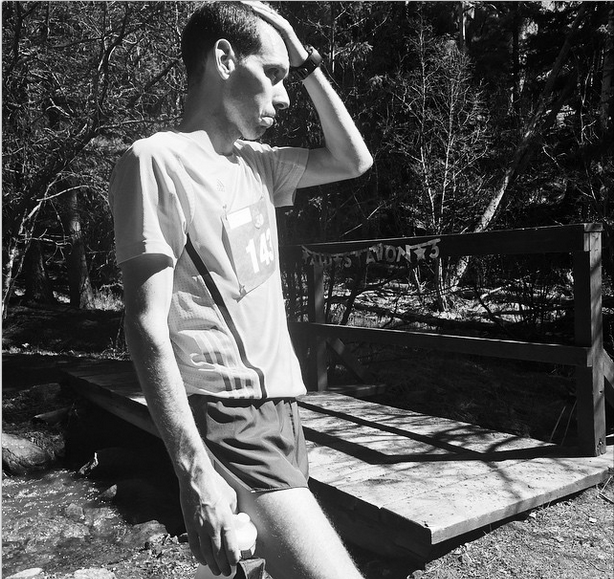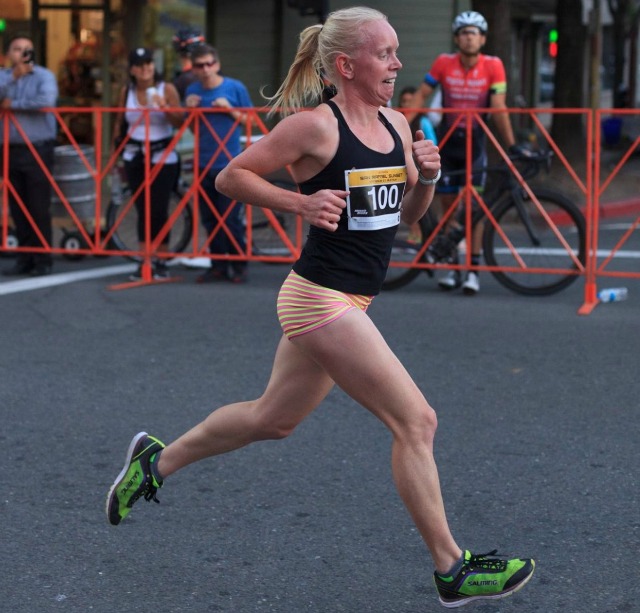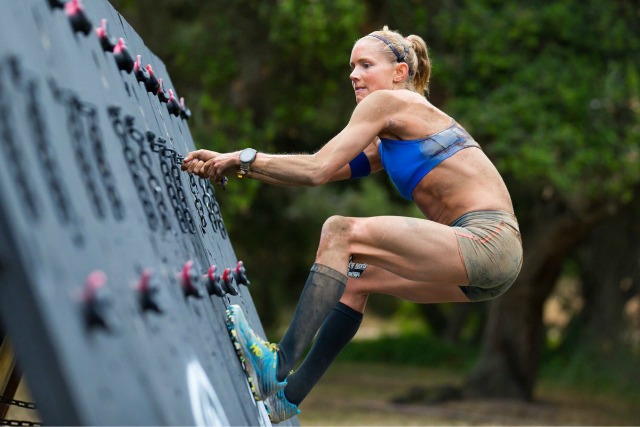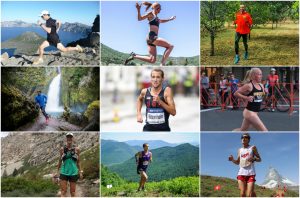The first 11 years of my running career had me constantly battling foot injuries, Achilles tendinopathy, IT Band Syndrome, plantar fasciitis, muscle strains, and a chronic SI joint problem.
No wonder I’m biased toward injury prevention!

After years of feeling like my body was betraying me, I was ready to quit running.
I was 26 years old and had spent six months injured with ITBS, in pain, and debating whether or not I would ever run again. I had already run in college and posted some impressive (for me) times, so why not quit?
After all, most of my friends from the track and cross country teams weren’t training that much anymore. If they could stop, so could I.
But something just didn’t feel right. I really liked running – maybe more so than some of my other running friends. And for some reason, I loved the feeling of strength you get from putting in 10 miles a day, day after day.
So I took the road less travelled, sucked up my ego, and saw a lot of physical therapists. I researched injuries in runners. And I read so many running books that my wife started wondering if we were saving for retirement.
The end result was that since 2009, I’ve only had one semi-serious injury. And I’ve become obsessed with preventing injuries because the results are dramatic:
- You’ll be able to run more mileage, consistently (more is better!)
- Your mindset won’t be savaged from needing to take time off
- Small injuries don’t become major injuries
- Major injuries don’t become chronic injuries, affecting your longevity as a runner and overall health
Naturally, I sought the best guidance in the world. I loved hearing how elite athletes prevent injuries because they’re putting in the most training hours, at the highest intensities, and have the most pressure to perform.
If they have insights, I needed to hear them!
And so a few years ago, I reached out to 9 professional athletes to hear their best injury prevention strategies. They’re trail runners, ultramarathoners, triathletes, Olympians, and obstacle course runners.
Their breadth of experiences is included in our free book The Little Black Book of Prevention & Recovery.
Today, I want to highlight two contributions from triathlon rock star Kelly O’Mara and World’s Toughest Mudder champion Amelia Boone.
Kelly O’Mara on Life Stress:

When I made the conscious decision to commit myself to triathlon and improve my training, I did something very deliberately: I made sure I created time in my life to sleep and rest. And then I slept and rested. A lot.
It’s (relatively) easy to train hard. It’s also easy to know that you should sleep and recover. But it’s just as easy to let everything you know you should be doing fall by the wayside because you have to get up early to get the workout in, because you need to finish this one thing late at night, because you’re busy, busy, busy.
Stop being busy.
I know it’s not possible for everyone to have as flexible a schedule as they’d like to have. But it is possible to cut out the distractions, to create extra time in your life to done nothing. My husband likes to call himself my “elite athlete consultant,” and his main duty in that role is to tell me when I shouldn’t take on extra jobs or extra commitments.
Give yourself time to lay on the couch on weekend afternoons and nap or watch bad TV. If you want to sleep eight hours, then you need more than eight hours from when you get in bed to when you have to be out of bed. And if you want to sleep more than eight hours, then do that.
I like to have at least one day each week when I don’t need to set an alarm at all, so I can sleep as much I possibly need. Sometimes that means I don’t get out of bed until 10 a.m. People may make fun of it and you might feel like you’re being a bum, but they’ll stop making fun when you get faster.
My training partners know I won’t work out on weekends before 9 a.m. (especially in the winter, when it’s cold). They know I’m lazy. But they also know I’ve gotten a lot faster while being lazier than ever.
About Kelly
Kelly O’Mara is a reporter, primarily covering endurance sports, the Olympics, and triathlon for publications like Outside, espnW, Bicycling Magazine, Competitor Magazine, Yahoo! Travel, VICE Sports, and many others.
She was an elite triathlete after college, took a few years off, and will be racing as a professional triathlete again in 2017. She also has multiple years of cross country and track experience as well as being an open water swimming coach.
Connect with Kelly: Follow her on Twitter. Check out her newsletter and podcast.
Amelia Boone on Stability & Mobility

To prevent injury, I find there are two key parts: mobility and stability. Often athletes focus too much on one, and not enough on the other. A few things I do to address both parts:
Dedicate 10 minutes each night before you go to bed to mobilize a particular body part. It doesn’t need to be the same one (and shouldn’t always be the same!), but focus on moving your tissues and loosening up before you go to bed.
For runners, single leg strength is everything – I work on single leg stability at least twice a week in the form of lunges, single leg squats, balance work with slant boards, Bosu balls, and other unstable surfaces.
If you’ve injured a particular body part (i.e., muscle strain), focus on loosening the tissues around it – not the injured tissue itself. For example, if you’ve pulled a hamstring, foam roll the calves, quads, glutes, etc. Those are the tissues that will compensate for the injury and lead to compensatory patterns. And often, the place of pain isn’t the source of the problem.
If you are desk bound like I am, do what you can to stay moving as much as possible. Take a lap around the office at least twice an hour. On conference calls, I like to sit in the bottom of a squat or hold a plank. Keep a golf ball at your desk and roll out the bottom of your feet during the day. The little movements add up.
Go barefoot as much as possible in everyday life – builds foot strength, lets your toes breathe!
Take complete rest days – “active recovery” is all the rage right now, but I’m a firm believer in just letting the body be completely static once in a while. We can tend to take our “active recovery” too far!
About Amelia
Amelia Boone is a force of nature. She’s not only a full-time attorney for Apple, but the most dominant female obstacle course athlete in history.
But she’s not just the best (if not THE best) female OCR athlete – she usually beats 99% of men in every race she enters.
A small taste of her racing performances include:
- 30+ victories (and 50+ podium finishes)
- 2013 Spartan Race World Champion
- 2012 Spartan Race World Championship 2nd place overall (only 8 minutes behind the male winner)
- 2012, 2014, and 2015 World’s Toughest Mudder Champion
- 3x finisher of the Death Race
Connect with Amelia: Follow her on Twitter or Instagram. Amelia’s Website.
Learn From the Best
I worked with nearly a dozen professional runners to hear their favorite recovery and injury prevention strategies.
The result is The Little Black Book of Prevention & Recovery and besides Kelly and Amelia, it features:
- Dathan Ritzenhein – 3x Olympian, 3x National Cross Country Champion
- Devon Yanko – 100k National Champion and 2012 Olympic Trials Marathon Qualifier
- David Roche – 2x National Trail Running Champion
- Andy Wacker – Trail Half Marathon National Champion
- Ian Sharman – 3x winner of the Leadville Trail 100
- Joseph Gray – Mount Washington American Record holder and World Mountain Running Champion
- Max King – US National Ultra Running Champion and 2x winner World Warrior Dash Champion
Each of these world-class athletes shared their favorite recovery or injury prevention strategy – and the responses are incredibly varied.
You’ll hear about post-race recovery, why you should eat a LOT, how to return to running after an injury (and what mistakes to avoid), and the virtues of eliminating busyness from your life.
Pick and choose the ideas that most resonate with you. Implement them and you’ll be a better, stronger, healthier, and faster runner.
Click on the button below to download the free book. Enjoy!
